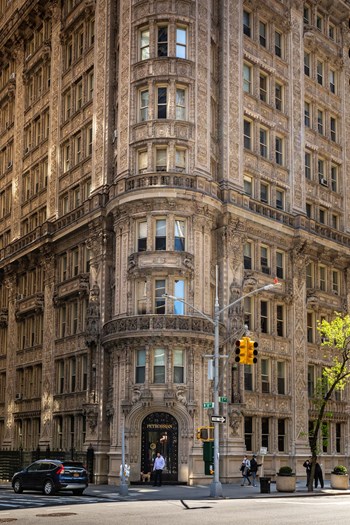
The unique charm of historic properties—both inside and out—is a key draw for many co-op and condo buyers. Exterior ornamentation, ornate brickwork and moldings, inlaid flooring and other vintage features create exactly the kind of ambience those who buy into historic properties are often seeking. Pre-war, formerly-industrial, and architecturally significant components set older buildings apart from the generic, dime-a-dozen aesthetic common to much newer construction.
Appealing as they are however, these elements—particularly on building exteriors—also require unique, specific, and often costly maintenance programs. Terracotta, cast and wrought iron, and artistic masonry work must be scrupulously maintained in order to remain not only beautiful, but safe and structurally sound.
A Labor of Love
Maintaining and repairing historic, landmarked, or ornate buildings is a complex process that involves balancing preservation and functionality goals with modern standards.
“Whether it’s terracotta moldings, a copper roof, carved stone ornaments, or cast iron, the features that make historic buildings unique and give them undeniable curb appeal also pose significant challenges when maintenance, repair, or full replacement is required,” says Antonio Argibay, principal of Meridian Design Associates, with offices in New York and Miami.
“What sets this type of work apart from typical repairs,” adds Kunal Badheka, a principal with Thornton Tomasetti, an international engineering firm with offices in Newark, New Jersey, “is the need for restoring the historic fabric in-kind, so that maintenance and alteration does not alter the building’s original appearance.”
“This status protects buildings,” says Giulia Alimonti, vice president for building envelope in the New York office of Entuitive, an architectural and engineering firm with offices in the United States and Canada. “In historic districts and elsewhere, we find landmark properties that have these specific kinds of features. Proper maintenance of these features protects the character of these buildings, but often requires an extra step every time they need repair.”
“What sets these properties apart is the fact that they are primarily made of different kinds of materials than are used nowadays,” says Roger Panek, principal of Taylor Panek architects, with offices in Massachusetts and Maine. “Special knowledge and experience for cleaning and maintenance is required. Most important is to know how to clean these materials.”
Construction Considerations
Buildings with historical character contribute to the shared cultural and architectural fabric of a city. Over time, these buildings often become cherished community assets, recognized for their materials, styles, and construction techniques. “While all buildings require maintenance due to age and environmental exposure,” says Argibay, “historic buildings demand specialized care to preserve their unique attributes. Often, this entails using traditional methods and materials from the era in which they were constructed.”
“Some key challenges and considerations,” notes Badheka, “include preservation laws and their approval process, specialized materials and techniques, identifying repair solutions that would minimize the disturbance to a larger building system or element, and oftentimes a need to develop a sustainable and energy-efficient solution, which may conflict with preservation efforts.”
In New York City, for instance, explains Alimonti, “There are many, many older buildings that must be periodically inspected and constantly maintained. Façade features such as ornamental terracotta, brownstone, limestone and ornamental brick work must be protected, and the inspection of these elements must be done manually, tapping with a rubber mallet to make sure there aren’t any loose pieces. When repairs are needed, these elements must be repaired in-kind, with the same materials from which they were made originally.”
“The issue is to do a real, hands-on examination of these materials,” continues Alimonti. “We must have at least a significant sample to have an idea of the extent of repair needed. Is the deterioration just to specific areas, or is it systemic? Also, what’s behind the damage? Are the steel supports rusted, for instance? We then come up with a comprehensive program to repair or replace. We make sure the materials are identified properly, and develop a realistic timeline for the work to take place.”
Different Materials, Different Methods—Same Attention to Detail
When repairing historically significant or artistically and architecturally important exteriors, different building materials may require different methods, but all require the same attention to detail. Let’s take a look at a few different scenarios.
Terracotta is a Latin word that means ‘baked earth,’ and terracotta elements such as tiles, cornices, lintels, and even gargoyles are often found on artistic building exteriors. The same glazed or unglazed fired clay used to make earthenware articles such as pots, bricks, statuettes can also be used for architectural purposes, like roofing or façade ornamentation.
“To clean terracotta,” says Panek, “you try the simplest thing first: water blasting. If that doesn’t work, we may use chemicals. We start with extreme dilution, moving on carefully to greater concentrations where needed. If the solution is too strong it will ‘burn’ the ornaments, putting a haze on the finish and ruining them. So most importantly, you need someone with experience who knows how to do the job.”
Alimonti points out that there are currently only two companies in the United States that produce ornamental glazed terracotta—one in Buffalo, New York, and one in California. That means that if you’ve got terracotta elements on your building that need repair or replacement, you need a lot of lead time to make that happen. If you don’t have that luxury and need to move faster than the supply chain allows, some historic preservation boards will allow alternative materials to be used.
According to Argibay, “Replacing glazed terracotta elements can be particularly challenging. If a faithful reproduction is not financially viable, substitutes like glass fiber reinforced concrete (GFRC) or fiberglass may be proposed.”
Cast iron is another element that requires a lot of attention to detail. “Exposed exterior elements are subject to freeze-thaw cycles,” says Badheka. “For buildings near the Atlantic coastline, the exterior is vulnerable to salt air and humidity that can accelerate the corrosion of metal features. So understanding the impact of such factors is essential when developing a repair/restoration solution.”
Along that line, Argibay cautions that “Some historic buildings suffer from original design flaws, such as inadequate roof drainage, which exacerbate maintenance issues.” This may be particularly true with respect to cast iron, where damage from water and moisture is a real threat due to the rusting they cause.
When cast iron needs to be repaired,it may be necessary to resolder, replace missing pieces, and repaint. “It rusts less than steel,” says Alimonti, “but it still needs to be maintained and repaired. The cost depends on what needs to be done. Repainting is obviously less expensive than other options, but if it’s more extensive, it can end up costing more.”
Alternatives
If it’s not feasible to use identical materials or methods for a repair/restoration project, there are modern alternatives that can sometimes provide practical solutions that balance cost and historical accuracy. “For example,” says Argibay, “GFRC, fiberglass, and other engineered materials offer lightweight, durable alternatives to traditional materials like terracotta or stone. Advances in non-destructive testing, such as laser scanning and thermal imaging, help assess structural integrity without harming original elements. Additionally, some manufacturers now produce historically inspired materials that meet modern performance standards, allowing restorers to replicate the appearance of original features while improving durability and functionality. However, these substitutes must be carefully vetted to ensure compatibility with the historic structure and adherence to [landmarking] guidelines.”
Craftsmanship
Another major consideration in maintaining and repairing these types of facades and details is finding craftspeople able to do the work.
“Finding skilled tradespeople with expertise in restoring historic structures is one of the most significant challenges in these projects,” says Argibay. “Craftsmen who specialize in traditional techniques, such as working with copper, iron, wood, and terracotta, are critical to ensuring authentic restoration. However, these trades have dwindled in the modern era of glass-and-steel construction, making such expertise both rare and expensive.”
These skills are not something you can learn online or from a textbook. “You have to go to work as a young person for a contractor to get hands-on experience,” says Panek. “You become an apprentice to someone and learn over years, not from books or courses. This knowledge is dying out as fewer and fewer are specializing in historic buildings. As we build differently, there is less need for these trades.”
Increased Vigilance
“Generally speaking,” says Badheka, “historic buildings tend to be harder to maintain and restore due to the fact that some materials, as well as fabrication and installation techniques, are obsolete. This is also compounded by regulatory constraints and inevitable hidden issues that may go unnoticed without regular inspection. In some instances though, because the historic structures were constructed with durable materials and superior craftsmanship, they generally tend to have better longevity compared to many modern prefabricated materials or composites.”
The key to controlling maintenance issues, suggests Alimonti, is more and more regular inspections and a more consistent maintenance program. Don’t turn a blind eye to your aging building’s exterior elements, and don’t postpone care. Problems will not disappear; they will only worsen.
“Historic buildings present a mix of challenges and advantages when it comes to maintenance,” says Argibay. “On the one hand, their craftsmanship and materials often reflect a level of quality and durability that exceeds many modern structures. On the other hand, their age and the obsolescence of certain materials make repairs more complex and costly.” Similar to vintage automobiles, older buildings are more prone to wear and tear as they age. Maintaining them properly is the key to their longevity.
A J Sidransky is a staff writer/reporter for CooperatorNews. He may be reached at alan@gmail.com



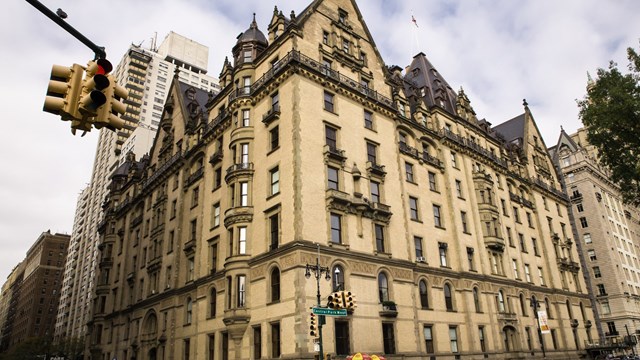

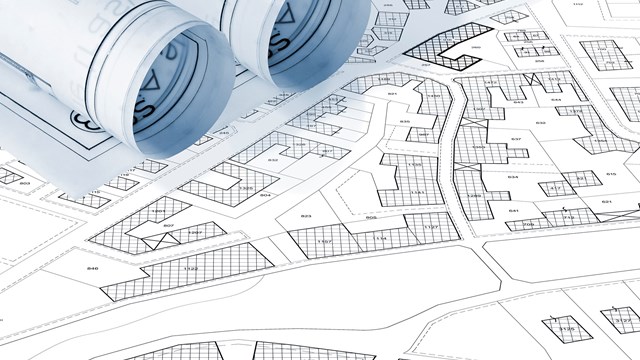
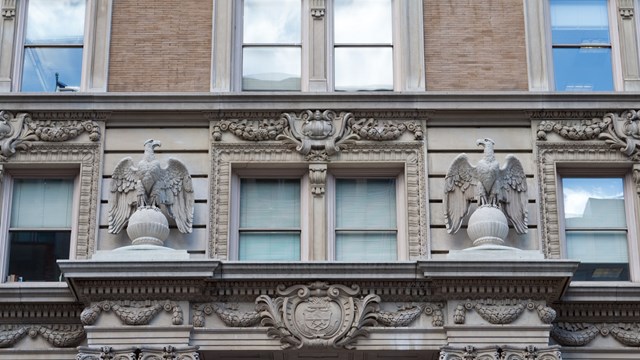
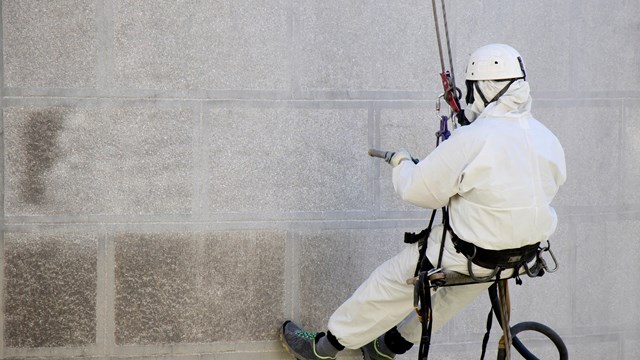
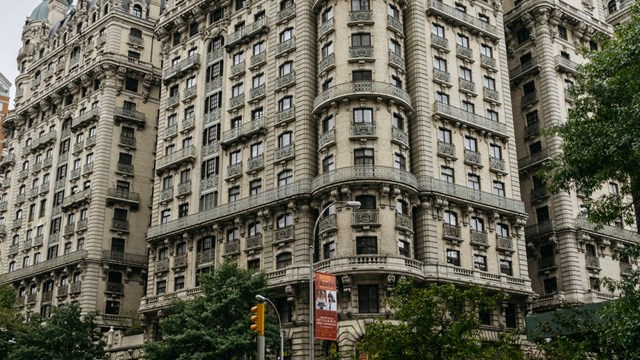
Leave a Comment